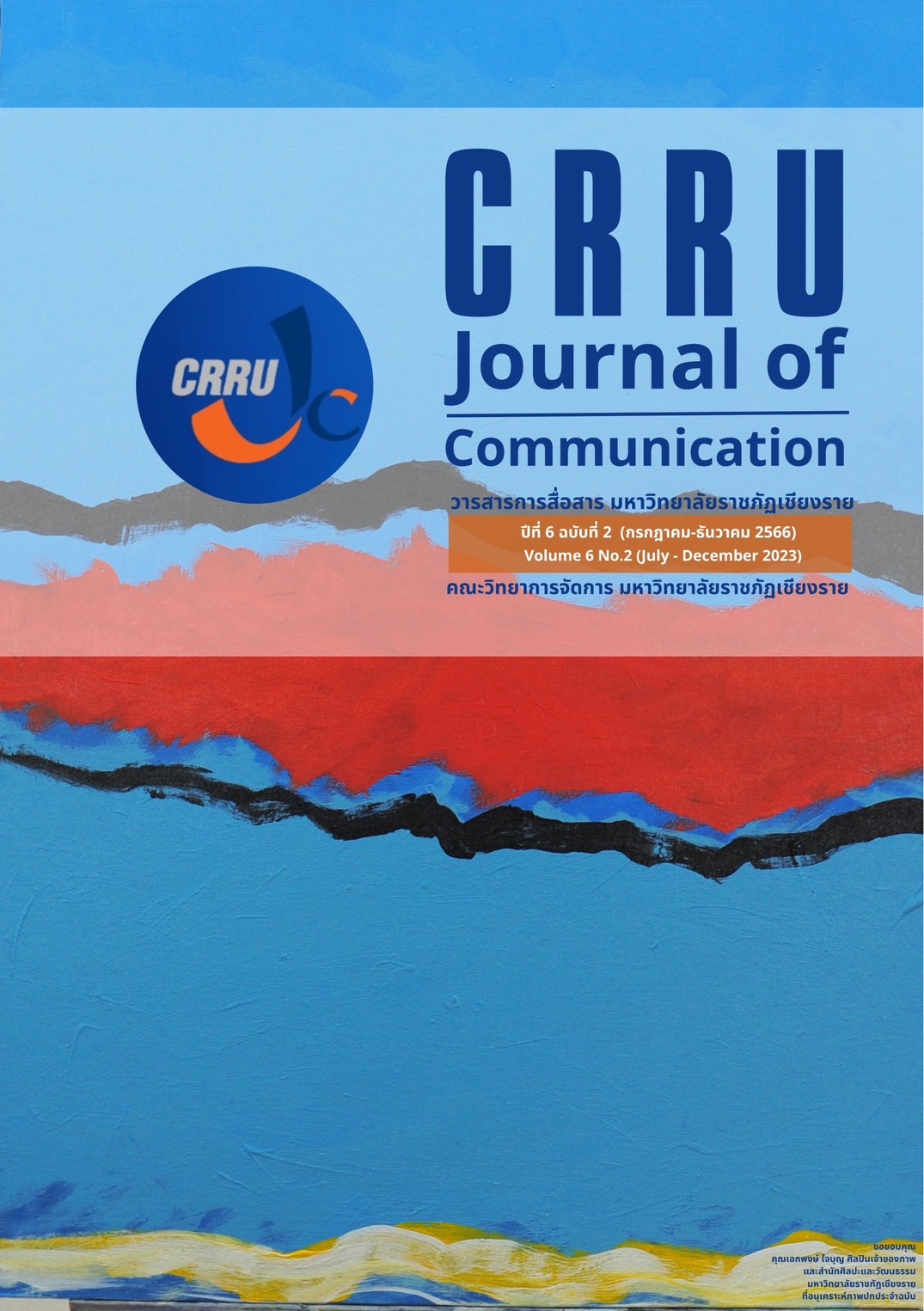TikTok and the Construction of Reality for Self Identity in the Digital Age
Main Article Content
Abstract
The construction of social reality is a communication theory that focuses on studying the role of mass media in communicating stories until the receiver believes them and perceives them as true, even though the actual truth may be unknown. This study was conducted in collaboration with the digital platform TikTok, which is a growing platform that captivates today's audience. The receiver transforms into the messenger and fulfills their duty by using such media to create truth for society.
Through the study and analysis, it was discovered that the TikTok platform shapes reality in society through the identities of messengers in various forms: (1) as entertainers or creators of entertainment, (2) as knowledgeable individuals, experts, or "gurus," (3) as creative thinkers, and (4) as online product sellers with unique styles and identities. Each construction employs different strategies, utilizing the tools of the TikTok platform such as filters to enhance appearances, adding text and graphic stickers, incorporating music or background music, and engaging in live broadcasts.
However, the construction of reality by the messenger for self-identity may not always accurately reflect the messenger or TikToker's true identity. The behaviors, roles, and expressions observed may only represent a world of meaning that the receiver has interpreted or believed based on what the TikToker communicated.
Article Details
References
กระทรวงดิจิทัลเพื่อเศรษฐกิจและสังคม. (2565). ดีอีเอส พบแนวโน้มโกงซื้อขายออนไลน์ผ่าน TikTok ขาขึ้น. สืบค้นจาก https://mdes.go.th/news/detail/5767-ดีอีเอส-พบแนวโน้มโกงซื้อขายออนไลน์ผ่าน-TikTok-ขาขึ้น
กาญจนา แก้วเทพ, กำจร หลุยยะพงศ์, จันทนา ทองประยูร, บุษบา สุธีธร และ สมสุข หินวิมาน. (2557). ปรัชญานิเทศาสตร์และทฤษฎีการสื่อสาร. กรุงเทพฯ: มหาวิทยาลัยสุโขทัยธรรมาธิราช.
ณัฏฐพงษ์ สายพิณ. (2563). ปรากฏการณ์ทางวัฒนธรรมวิชวลผ่าน TikTok ในสังคมไทย. วารสาร สาร สื่อ ศิลป์, 3(5), 55-66.
นลินทิพย์ เนตรวงศ์. (2559). ภาพตัวแทน “ผู้ชายในฝัน” ในละครโทรทัศน์แนวโรมานซ์. (วิทยานิพนธ์วารสารศาสตรมหาบัณฑิต). มหาวิทยาลัยธรรมศาสตร์. กรุงเทพฯ.
ภรภัทร ธัญญเจริญ. (2564). พฤติกรรมการเปิดรับ ทัศนคติ และการตัดสินใจใช้งานแอปพลิเคชัน TikTok. (วิทยานิพนธ์นิเทศศาสตรมหาบัณฑิต). มหาวิทยาลัยธุรกิจบัณฑิตย์. กรุงเทพฯ.
AP. (2566). ซีอีโอ 'ติ๊กตอก' ตอบคำถามวุฒิสภาสหรัฐฯ กรณีความกังวลด้านความมั่นคง.
สืบค้นจาก https://www.voathai.com/a/tiktok-ceo-faces-off-with-congress-over-security-fears/7018749.html
Berger, P. L., and Luckmann, T. (1966). The Social Construction of Reality: A Treatise in the Sociology of Knowledge. London: Penguin Group.
Chula. (2563). อาจารย์จุฬาฯ วิจัย “ผลกระทบของสื่อสังคมออนไลน์ ต่อการเปลี่ยนแปลง ทางสังคมและวัฒนธรรม ไทย. สืบค้นจาก https://www.chula.ac.th/news/27969/
Nattapon Muangtum. (2565). สรุปข้อมูลผู้ใช้งาน TikTok Data Stat & Insight 2022. สืบค้นจาก https://www.everydaymarketing. co/trend-insight/tiktok-data-stat-and-insight-thailand-2022-we-are-social/
Sarun Rojanasoton. (2565). ทำความรู้จัก “User-Generated Content” โอกาสใหม่สำหรับนักการตลาด. สืบค้นจาก https://www.thumbsup.in.th/benefit-of-ugc-marketing-opportunity
TikTok. (2565). ครั้งแรกกับงานมอบรางวัลสุดยิ่งใหญ่ "TikTok Awards Thailand 2022" ยกระดับครีเอเตอร์ไทยสู่สากล. สืบค้นจาก https://newsroom.tiktok.com/th-th/inaugural-tiktok-awards-thailand-2022-honoring-local-creators


